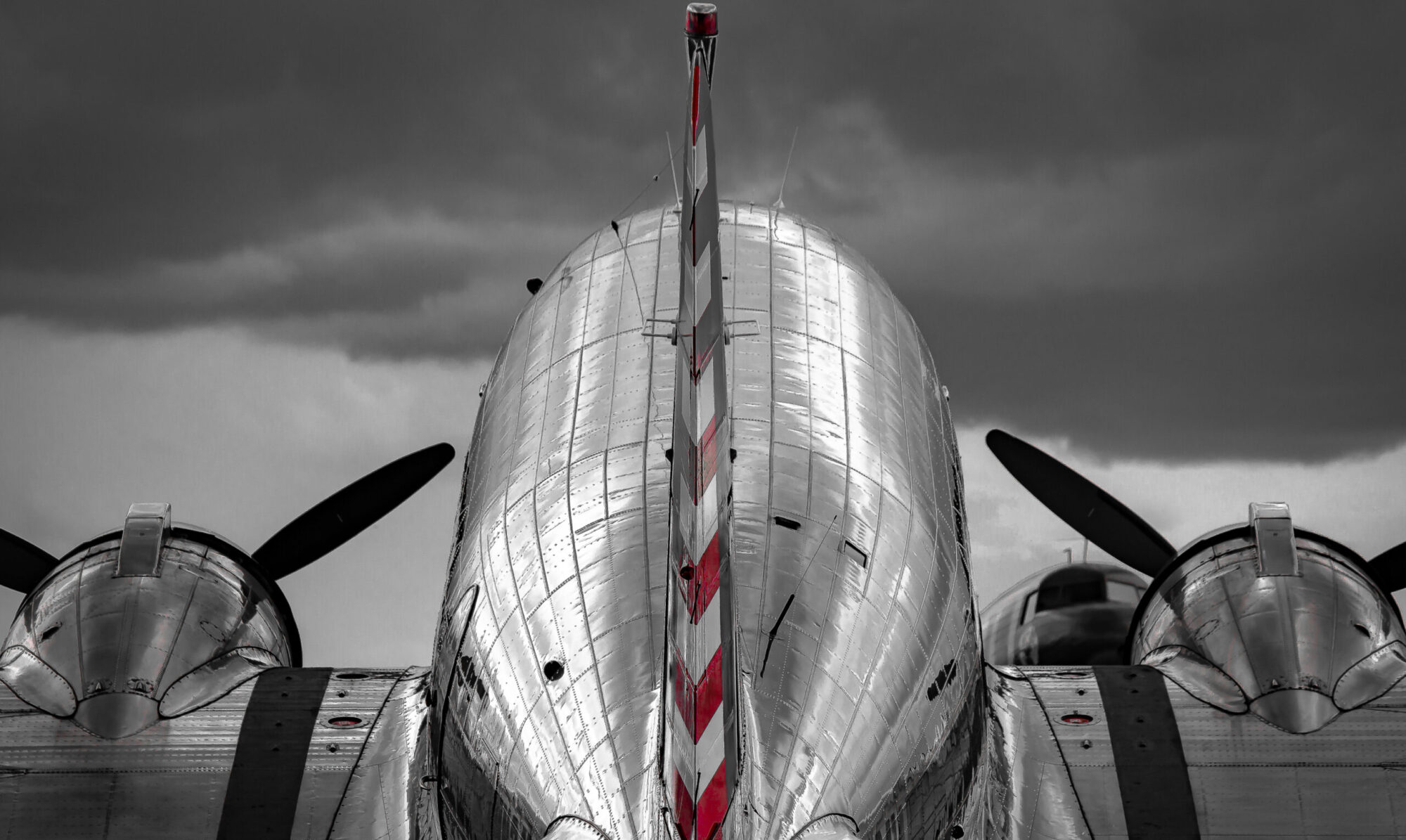It’s one thing to conquer the Atlantic lounging in seat 12A on an American Airlines 777, and quite another to shepherd a part of history (all 70+ year old, 24,000-odd pounds of her) through a similar mission…
So, congratulations to two Douglas C-47 crews (and their supporting teams) on their respective successful transatlantic crossings this month! The crew of Whiskey 7 [www.rtn2014.org/whiskey7.html] just reached their destination of Duxford, England [http://www.iwm.org.uk/visits/iwm-duxford], on May 23 in time for its airshow over the weekend. The crew of Union Jack Dak [https://www.flickr.com/photos/egbe-enthusiasts/13967383899/in/set-72157644597348802] arrived at Coventry Airport on May 10.
Even for a pilot with a lot of experience flying the DC-3 type, this achievement is significant, and particularly so more than 70 years after the airplane’s first flight. Most of the DC-3s and C-47s today fly short hops, over land, and rarely stray too far from a maintenance base. To cross the Atlantic now in these aircraft, you must prepare as though again mustering for an invasion, though the mission is nowhere near as hazardous.
Union Jack Dak (now N74589) and Whiskey 7 (now N345AB) followed different plot lines in post-war service, but they each played an important part in the Normandy Invasion and survived to tell their tales. Union Jack Dak came to the US Army Air Corps as 42-24064 in 1942 out of the Douglas plant at Long Beach, California, and she was assigned to the 437th Troop Carrier Group. She flew over to England and was based at RAF Aldermaston [http://en.wikipedia.org/wiki/RAF_Aldermaston] to prep for the invasion. On June 6, 1944, she and her group towed Waco CG4A gliders over Normandy.
Whiskey 7 is a 1943 C-47A that registered as 43-30652 out of Long Beach in September of that year. She was the lead ship for the second wave of the airborne thrust out of RAF Cottesmore [http://en.wikipedia.org/wiki/RAF_Cottesmore], and dropped paratroops from the 3rd Battalion, 505th Parachute Infantry Regiment of the 82nd Airborne Division. Her target? Drop Zone “O” near Sainte Mere Eglise, at which the unit successfully landed on that early morning, one of the few units to hit the planned target. Later that year, she was part of a section that towed gliders in Operation Market Garden over the Netherlands and Germany.
Both airplanes will join the Daks Over Normandy event [www.daksovernormandy.com] in the coming weeks, and we will share in the emotion and reverence those days shall surely bring. That they each made this incredible journey stands as testimony to the dedication of a lot of folks who worked hard to make it happen. Well done.
from May 24, 2014
